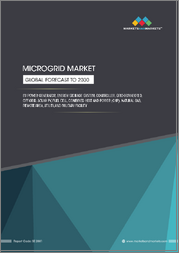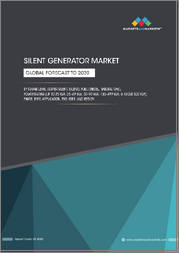
|
시장보고서
상품코드
1755885
세계의 건식 천연가스 시장 예측(-2032년) : 공급원, 가스품질, 유통형태, 용도, 진입기업, 지역별 분석Dry Natural Gas Market Forecasts to 2032 - Global Analysis By Source (Cleaning Conventional Natural Gas and Unconventional Natural Gas), Gas Quality (High-Btu Gas and Low-Btu Gas), Distribution Mode, Application, Participant and By Geography |
||||||
Stratistics MRC에 따르면 세계의 건식 천연가스 시장은 2025년 1조 1,074억 달러를 차지하고 예측 기간 중 CAGR은 7.1%로 확대되어 2032년에는 1조 7,899억 달러에 이를 전망입니다.
가공 건식 천연 가스는 주로 메탄으로 이루어져 중질 탄화수소와 황화수소, 수증기 등의 불순물은 매우 적습니다. 난방, 발전, 공업 프로세스에 널리 이용되고 있어 효율적이고 보다 깨끗한 화석 연료입니다.
세계 인구 증가와 급속한 도시화
확대하는 도시 인프라와 산업화에는 안정적인 연료 공급이 필요하며, 천연 가스는 발전과 난방에 적합한 선택지가 되고 있습니다. 또한 채굴 및 가공 기술의 발전은 환경에 미치는 영향을 최소화하면서 공급 효율을 높이고 있습니다.
인프라 한계와 높은 자본 지출
광범위한 파이프라인 네트워크와 저장 시설을 수립하기 위해서는 엄청난 자금 투자가 필요하며, 확장 프로젝트가 지연되는 경우가 많습니다. 또한 국경을 넘는 가스 운송에 영향을 미치는 지정 학적 요인은 공급망의 혼란을 일으킬 수 있습니다.
에너지 전환에서 "교량 연료"로서 천연 가스
석탄과 석유에 비해 천연가스는 탄소 배출량이 적고 환경부하 저감을 위한 잠정적인 솔루션으로 매력적입니다. 가스는 안정적인 베이스 로드 전력을 공급함으로써 재생에너지를 보완합니다. 또한 가스와 재생에너지를 통합한 하이브리드 에너지 시스템이 보급되고 있어 기후 변화 목표를 지원하면서 에너지의 신뢰성을 최적화하고 있습니다.
신재생에너지 도입의 급속한 가속
태양광 발전, 풍력 발전, 기타 재생에너지는 비용 저하, 축전 솔루션의 개선, 정책적 틀의 지원으로 전 세계적으로 보급이 진행되고 있습니다. 재생 가능 에너지 통합이 진행되고 있는 지역에서는 천연가스 수요가 감소할 수 있습니다.
COVID-19의 영향:
팬데믹은 세계 천연가스 시장에 큰 영향을 미치고 공급망을 혼란시키고 인프라 프로젝트를 지연 시켰습니다. 허수아비, 경제 회복 노력이 기세를 늘리면 에너지 안보에 대한 투자가 증가하여 수요가 회복되었습니다.
예측 기간 동안 재래식 천연 가스 부문이 최대가 될 전망
재래식 천연 가스 부문은 채굴 및 분배 인프라가 확립되어 있기 때문에 예측 기간 동안 최대 시장 점유율을 차지할 것으로 예측됩니다. 상업, 산업 부문에 걸친 광범위한 수요의 혜택을 받고 있습니다. 재래식 가스는 특히 천연 매장량이 풍부한 지역에서는 많은 국가의 에너지 포트폴리오의 기간으로 유지되어, 시장의 주도권 계속을 확실히 하고 있습니다.
예측 기간 동안 파이프라인 분야의 CAGR이 가장 높아질 전망
예측기간 동안 파이프라인 부문은 가스배급효율을 향상시키고, 원격지와 도시를 불문하고 소비량 증가에 대응하기 위한 파이프라인 인프라의 확대로 인해 가장 높은 성장률을 보일 것으로 예측됩니다.
최대 점유율을 차지하는 지역:
예측기간 중 아시아태평양은 견조한 산업화, 중국과 인도 등 신흥경제 국가에 의한 에너지 수요 증가, 도시 개척의 진전 등을 배경으로 최대 시장 점유율을 차지할 것으로 예측됩니다.
CAGR이 가장 높은 지역:
예측기간 중 북미지역이 가장 높은 CAGR을 나타낼 것으로 예상되지만, 이것은 기술적 진보, 셰일가스 개발, 지원정책에 따른 것입니다.
무료 맞춤형 서비스
이 보고서를 구독하는 고객은 다음 무료 맞춤설정 옵션 중 하나를 사용할 수 있습니다.
- 기업 프로파일
- 추가 시장 기업의 종합적 프로파일링(3개사까지)
- 주요 기업의 SWOT 분석(3개사까지)
- 지역 세분화
- 고객의 관심에 응한 주요국 시장 추계, 예측, CAGR(주: 타당성 확인에 따름)
- 경쟁 벤치마킹
- 제품 포트폴리오, 지리적 존재, 전략적 제휴에 기반한 주요 기업 벤치마킹
목차
제1장 주요 요약
제2장 서문
- 개요
- 이해관계자
- 조사 범위
- 조사 방법
- 데이터 마이닝
- 데이터 분석
- 데이터 검증
- 조사 접근
- 조사 자료
- 1차 조사 자료
- 2차 조사 정보원
- 전제조건
제3장 시장 동향 분석
- 성장 촉진요인
- 억제요인
- 기회
- 위협
- 용도 분석
- 신흥 시장
- COVID-19의 영향
제4장 Porter's Five Forces 분석
- 공급기업의 협상력
- 구매자의 협상력
- 대체품의 위협
- 신규 참가업체의 위협
- 경쟁 기업간 경쟁 관계
제5장 세계의 건식 천연가스 시장 : 공급원별
- 기존 천연가스
- 비재래형 천연가스
- 셰일 가스
- 타이트 가스
- 탄층 메탄(CBM)
제6장 세계의 건식 천연가스 시장 : 가스 품질별
- 고 Btu 가스
- 저 Btu 가스
제7장 세계의 건식 천연 가스 시장 : 유통 형태별
- 파이프라인
- LNG(액화천연가스)
- CNG(압축천연가스)
제8장 세계의 건식 천연가스 시장 : 용도별
- 발전
- 산업용 난방
- 주택 및 상업용 난방
- 운송
- 기타 용도
제9장 세계의 건식 천연가스 시장 : 참가 기업별
- 프로듀서
- 리셀러
- 공급자
- 상인
제10장 세계의 건식 천연가스 시장 : 지역별
- 북미
- 미국
- 캐나다
- 멕시코
- 유럽
- 독일
- 영국
- 이탈리아
- 프랑스
- 스페인
- 기타 유럽
- 아시아태평양
- 일본
- 중국
- 인도
- 호주
- 뉴질랜드
- 한국
- 기타 아시아태평양
- 남미
- 아르헨티나
- 브라질
- 칠레
- 기타 남미
- 중동 및 아프리카
- 사우디아라비아
- 아랍에미리트(UAE)
- 카타르
- 남아프리카
- 기타 중동 및 아프리카
제11장 주요 발전
- 계약, 파트너십, 협업, 합작투자
- 인수와 합병
- 신제품 발매
- 사업 확대
- 기타 주요 전략
제12장 기업 프로파일링
- ExxonMobil Corporation
- Chevron Corporation
- Royal Dutch Shell
- BP PLC
- TotalEnergies SE
- ConocoPhillips
- Equinor ASA
- Gazprom
- Saudi Aramco
- PetroChina Company Limited
- Sinopec Group
- Eni SpA
- Occidental Petroleum Corporation
- CNOOC Limited
- Hess Corporation
- Woodside Energy Group Ltd.
- Chesapeake Energy Corporation
According to Stratistics MRC, the Global Dry Natural Gas Market is accounted for $1,107.4 billion in 2025 and is expected to reach $1,789.9 billion by 2032 growing at a CAGR of 7.1% during the forecast period. Processed dry natural gas consists primarily of methane, with minimal traces of heavier hydrocarbons and impurities like hydrogen sulfide and water vapor. It is derived after extracting natural gas liquids (NGLs) such as ethane, propane, and butane, ensuring suitability for direct use and pipeline transport. Widely utilized for heating, electricity generation, and industrial processes, it serves as an efficient and cleaner-burning fossil fuel. Its lower emissions profile makes it a key contributor to energy sustainability across various sectors.
Market Dynamics:
Driver:
Increasing global population and rapid urbanization
Expanding urban infrastructure and industrialization require consistent fuel supplies, making natural gas a preferred choice for electricity generation and heating. Governments worldwide are investing in energy security, ensuring stable gas availability for growing urban centers. Additionally, technological advancements in extraction and processing enhance supply efficiency while minimizing environmental impact. As residential and commercial energy consumption rises, dry natural gas plays a vital role in meeting sustainability goals.
Restraint:
Infrastructure limitations and high capital expenditure
Establishing extensive pipeline networks and storage facilities requires significant financial investment, often delaying expansion projects. Developing economies face hurdles in integrating advanced gas infrastructure due to cost constraints and regulatory approvals. Additionally, geopolitical factors affecting cross-border gas transportation create supply chain disruptions. The reliance on costly LNG terminals for export and import further adds to operational expenses, impacting market accessibility for certain regions.
Opportunity:
Natural gas as a "bridge fuel" in energy transition
Compared to coal and oil, natural gas generates lower carbon emissions, making it an attractive interim solution for reducing environmental impact. Investments in carbon capture and efficient gas-fired power plants strengthen its role in energy transition strategies. As nations implement decarbonization policies, natural gas complements renewable energy by providing stable baseload power. Additionally, hybrid energy systems integrating gas and renewables are gaining traction, optimizing energy reliability while supporting climate goals.
Threat:
Rapid acceleration of renewable energy adoption
Solar, wind, and other renewable sources are gaining traction worldwide due to falling costs, improved storage solutions, and supportive policy frameworks. As countries accelerate their transition to zero-carbon energy, the demand for natural gas could diminish, particularly in regions with strong renewable integration. Additionally, advancements in battery storage and green hydrogen production challenge the long-term role of natural gas, potentially leading to reduced investments and market share.
Covid-19 Impact:
The pandemic significantly affected global natural gas markets, disrupting supply chains and delaying infrastructure projects. Reduced industrial activity and lower energy demand led to temporary declines in gas consumption. However, as economic recovery efforts gained momentum, demand rebounded with increased investments in energy security. The crisis highlighted the importance of stable fuel supply, reinforcing long-term commitments to natural gas infrastructure.
The conventional natural gas segment is expected to be the largest during the forecast period
The conventional natural gas segment is expected to account for the largest market share during the forecast period due to its well-established extraction and distribution infrastructure. This segment benefits from mature technologies, reliable supply chains, and widespread demand across residential, commercial, and industrial sectors. Conventional gas remains the backbone of many national energy portfolios, especially in regions with abundant natural reserves, ensuring its continued market leadership.
The pipeline segment is expected to have the highest CAGR during the forecast period
Over the forecast period, the pipeline segment is predicted to witness the highest growth rate owing to expanding pipeline infrastructure to improve gas distribution efficiency and meet increasing consumption in remote and urban areas alike. Investments in pipeline modernization, safety enhancements, and cross-border gas connectivity projects contribute to this rapid expansion, facilitating seamless delivery and enhancing market accessibility.
Region with largest share:
During the forecast period, the Asia Pacific region is expected to hold the largest market share fueled by robust industrialization, rising energy demand from emerging economies like China and India, and increased urban development. Governments across the region are prioritizing natural gas to replace more polluting energy sources, supporting environmental goals while ensuring energy security.
Region with highest CAGR:
Over the forecast period, the North America region is anticipated to exhibit the highest CAGR attributed to technological advancements, shale gas development, and supportive policies. The region's strong focus on expanding natural gas export capacity, along with investments in pipeline and liquefaction infrastructure, underpins this rapid growth. Additionally, increased adoption of natural gas in power generation and transportation sectors propels market expansion in North America.
Key players in the market
Some of the key players in Dry Natural Gas Market include ExxonMobil Corporation, Chevron Corporation, Royal Dutch Shell, BP P.L.C., TotalEnergies SE, ConocoPhillips, Equinor ASA, Gazprom, Saudi Aramco, PetroChina Company Limited, Sinopec Group, Eni S.p.A., Occidental Petroleum Corporation, CNOOC Limited, Hess Corporation, Woodside Energy Group Ltd., and Chesapeake Energy Corporation.
Key Developments:
In May 2025, ExxonMobil announced a long-term agreement to supply approximately 250,000 tonnes of low-carbon ammonia annually to Marubeni Corporation. This deal aims to support energy transition efforts and strengthen U.S.-Japan industrial cooperation.
In May 2025, PetroChina announced the establishment of a hydrogen energy-focused venture capital fund with an initial investment of 5 billion yuan ($690 million). The fund aims to support early-stage investments and the development of key materials, core equipment, and proprietary technologies in the hydrogen sector.
Sources Covered:
- Conventional Natural Gas
- Unconventional Natural Gas
Gas Qualities Covered:
- High-Btu Gas
- Low-Btu Gas
Distribution Modes Covered:
- Pipeline
- LNG (Liquefied Natural Gas)
- CNG (Compressed Natural Gas)
Applications Covered:
- Power Generation
- Industrial Heating
- Residential & Commercial Heating
- Transportation
- Other Applications
Participants Covered:
- Producers
- Distributors
- Suppliers
- Traders
Regions Covered:
- North America
- US
- Canada
- Mexico
- Europe
- Germany
- UK
- Italy
- France
- Spain
- Rest of Europe
- Asia Pacific
- Japan
- China
- India
- Australia
- New Zealand
- South Korea
- Rest of Asia Pacific
- South America
- Argentina
- Brazil
- Chile
- Rest of South America
- Middle East & Africa
- Saudi Arabia
- UAE
- Qatar
- South Africa
- Rest of Middle East & Africa
What our report offers:
- Market share assessments for the regional and country-level segments
- Strategic recommendations for the new entrants
- Covers Market data for the years 2024, 2025, 2026, 2028, and 2032
- Market Trends (Drivers, Constraints, Opportunities, Threats, Challenges, Investment Opportunities, and recommendations)
- Strategic recommendations in key business segments based on the market estimations
- Competitive landscaping mapping the key common trends
- Company profiling with detailed strategies, financials, and recent developments
- Supply chain trends mapping the latest technological advancements
Free Customization Offerings:
All the customers of this report will be entitled to receive one of the following free customization options:
- Company Profiling
- Comprehensive profiling of additional market players (up to 3)
- SWOT Analysis of key players (up to 3)
- Regional Segmentation
- Market estimations, Forecasts and CAGR of any prominent country as per the client's interest (Note: Depends on feasibility check)
- Competitive Benchmarking
- Benchmarking of key players based on product portfolio, geographical presence, and strategic alliances
Table of Contents
1 Executive Summary
2 Preface
- 2.1 Abstract
- 2.2 Stake Holders
- 2.3 Research Scope
- 2.4 Research Methodology
- 2.4.1 Data Mining
- 2.4.2 Data Analysis
- 2.4.3 Data Validation
- 2.4.4 Research Approach
- 2.5 Research Sources
- 2.5.1 Primary Research Sources
- 2.5.2 Secondary Research Sources
- 2.5.3 Assumptions
3 Market Trend Analysis
- 3.1 Introduction
- 3.2 Drivers
- 3.3 Restraints
- 3.4 Opportunities
- 3.5 Threats
- 3.6 Application Analysis
- 3.7 Emerging Markets
- 3.8 Impact of Covid-19
4 Porters Five Force Analysis
- 4.1 Bargaining power of suppliers
- 4.2 Bargaining power of buyers
- 4.3 Threat of substitutes
- 4.4 Threat of new entrants
- 4.5 Competitive rivalry
5 Global Dry Natural Gas Market, By Source
- 5.1 Introduction
- 5.2 Conventional Natural Gas
- 5.3 Unconventional Natural Gas
- 5.3.1 Shale Gas
- 5.3.2 Tight Gas
- 5.3.3 Coalbed Methane (CBM)
6 Global Dry Natural Gas Market, By Gas Quality
- 6.1 Introduction
- 6.2 High-Btu Gas
- 6.3 Low-Btu Gas
7 Global Dry Natural Gas Market, By Distribution Mode
- 7.1 Introduction
- 7.2 Pipeline
- 7.3 LNG (Liquefied Natural Gas)
- 7.4 CNG (Compressed Natural Gas)
8 Global Dry Natural Gas Market, By Application
- 8.1 Introduction
- 8.2 Power Generation
- 8.3 Industrial Heating
- 8.4 Residential & Commercial Heating
- 8.5 Transportation
- 8.6 Other Applications
9 Global Dry Natural Gas Market, By Participant
- 9.1 Introduction
- 9.2 Producers
- 9.3 Distributors
- 9.4 Suppliers
- 9.5 Traders
10 Global Dry Natural Gas Market, By Geography
- 10.1 Introduction
- 10.2 North America
- 10.2.1 US
- 10.2.2 Canada
- 10.2.3 Mexico
- 10.3 Europe
- 10.3.1 Germany
- 10.3.2 UK
- 10.3.3 Italy
- 10.3.4 France
- 10.3.5 Spain
- 10.3.6 Rest of Europe
- 10.4 Asia Pacific
- 10.4.1 Japan
- 10.4.2 China
- 10.4.3 India
- 10.4.4 Australia
- 10.4.5 New Zealand
- 10.4.6 South Korea
- 10.4.7 Rest of Asia Pacific
- 10.5 South America
- 10.5.1 Argentina
- 10.5.2 Brazil
- 10.5.3 Chile
- 10.5.4 Rest of South America
- 10.6 Middle East & Africa
- 10.6.1 Saudi Arabia
- 10.6.2 UAE
- 10.6.3 Qatar
- 10.6.4 South Africa
- 10.6.5 Rest of Middle East & Africa
11 Key Developments
- 11.1 Agreements, Partnerships, Collaborations and Joint Ventures
- 11.2 Acquisitions & Mergers
- 11.3 New Product Launch
- 11.4 Expansions
- 11.5 Other Key Strategies
12 Company Profiling
- 12.1 ExxonMobil Corporation
- 12.2 Chevron Corporation
- 12.3 Royal Dutch Shell
- 12.4 BP P.L.C.
- 12.5 TotalEnergies SE
- 12.6 ConocoPhillips
- 12.7 Equinor ASA
- 12.8 Gazprom
- 12.9 Saudi Aramco
- 12.10 PetroChina Company Limited
- 12.11 Sinopec Group
- 12.12 Eni S.p.A.
- 12.13 Occidental Petroleum Corporation
- 12.14 CNOOC Limited
- 12.15 Hess Corporation
- 12.16 Woodside Energy Group Ltd.
- 12.17 Chesapeake Energy Corporation




















